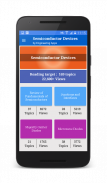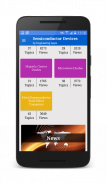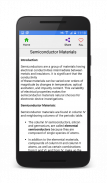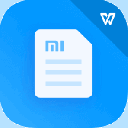









Semiconductor Device

Semiconductor Device介绍
* The Semiconductor device, electronic circuit is made up of a material that is neither a good conductor nor a good insulator.
* Semiconductor devices are nothing but electronic components that exploit the electronic properties of semiconductor materials, like as silicon, germanium, and gallium arsenide, as well as organic semiconductors.
Key Terms
o Semiconductor
o Diode
o Transistor
o Bipolar junction transistor
o Base
o Collector
o Emitter
o Integrated circuits
This useful App lists 160 topics with detailed notes, diagrams, equations, formulas & course material, the topics are listed in 5 chapters. The app is must have for all the engineering science students & professionals.
Track your learning, set reminders, edit the study material, add favorite topics, share the topics on social media.
You can also blog about engineering technology, innovation, engineering startups, college research work, institute updates, Informative links on course materials & education programs from your smartphone or tablet or at http://www.engineeringapps.net/.
Use this useful engineering app as your tutorial, digital book, a reference guide for syllabus, course material, project work, sharing your views on the blog.
Some of the topics Covered in the app are:
1. The Haynes-Shockley Experiment
2. Semiconductor Materials
3. Crystal Lattice
4. Cubic Lattices
5. Planes and Directions
6. The Diamond Lattice
7. Bulk Crystal Growth
8. Growth of Single Crystal Ingots
9. Wafers
10. Epitaxial growth
11. Vapor-phase epitaxy
12. Molecular beam epitaxy
13. Charge Carriers in Semiconductors
14. Effective Mass
15. Intrinsic Material
16. Extrinsic Material
17. Electrons and Holes in Quantum Wells
18. The Fermi Level
19. Compensation and Space Charge Neutrality
20. Drift and Resistance
21. Optical absorption
22. Photoluminescence
23. Electroluminescence
24. Carrier Lifetime and Photoconductivity
25. Direct Recombination of Electrons and Holes
26. Indirect Recombination; Trapping
27. Steady State Carrier Generation; Quasi-Fermi Levels
28. Photoconductive Devices
29. Diffusion Processes
30. Diffusion and Drift of Carriers: Built-in Fields
31. Diffusion and Recombination; The Continuity Equation
32. Steady State Carrier Injection: Diffusion Length
33. Gradients in the Quasi-Fermi Levels
34. Temperature Dependence of Carrier Concentrations
35. Effects of Temperature and Doping on Mobility
36. High-Field Effects
37. The Hall Effect
38. Fabrication of p-n Junctions: Thermal oxidation
39. Diffusion of P-N junction
40. Rapid Thermal Processing
41. Ion Implantation
42. Chemical Vapor Deposition (CVD)
43. Photolithography
44. Etching
45. Metallization
46. Equilibrium Conditions
47. Equilibrium Fermi Levels
48. Space Charge at a Junction
49. Forward- and Reverse-Biased Junctions
50. Carrier Injection
51. Reverse Bias
52. Reverse-Bias Breakdown
53. Zener Breakdown
54. Avalanche Breakdown
55. Rectifiers
56. The Breakdown Diode
57. Transient and A-C Conditions
58. Reverse Recovery Transient
59. The Ideal Diode Model
60. Effects of Contact Potential on Carrier Injection
61. Switching Diodes
62. Capacitance of p-n junctions
63. Recombination and Generation in the Transition Region
64. Ohmic Losses
65. Graded Junctions
66. Metal semiconductor junctions: schottky barriers
67. Current Transport Processes
68. Thermionic-Emission Theory
69. Diffusion Theory
70. Thermionic-Emission-Diffusion Theory
71. Rectifying Contacts
72. Tunneling Current
73. Minority-Carrier Injection
74. MIS Tunnel Diode
75. Measurement of Barrier Height
76. Activation-Energy Measurement
77. Photoelectric Measurement
78. Ohmic Contacts
Each topic is complete with diagrams, equations and other forms of graphical representations for better learning and quick understanding.
Semiconductor Devices is part of engineering education courses and technology degree programs of various universities.</br></br></br></br></br></br></br></br></br></br></br></br></br></br></br></br></br></br></br></br></br></br></br></br></br></br></br></br></br></br></br></br></br></br></br></br></br></br></br></br></br></br></br></br></br></br></br></br></br></br></br></br></br></br></br></br></br></br></br></br></br></br></br></br></br></br></br></br></br></br></br></br></br></br></br></br></br></br></br></br></br></br></br></br></br></br></br></br></br></br></br></br></br></br></br></br></br></br></br></br></br></br></br></br></br></br></br></br></br></br></br></br></br></br>

























